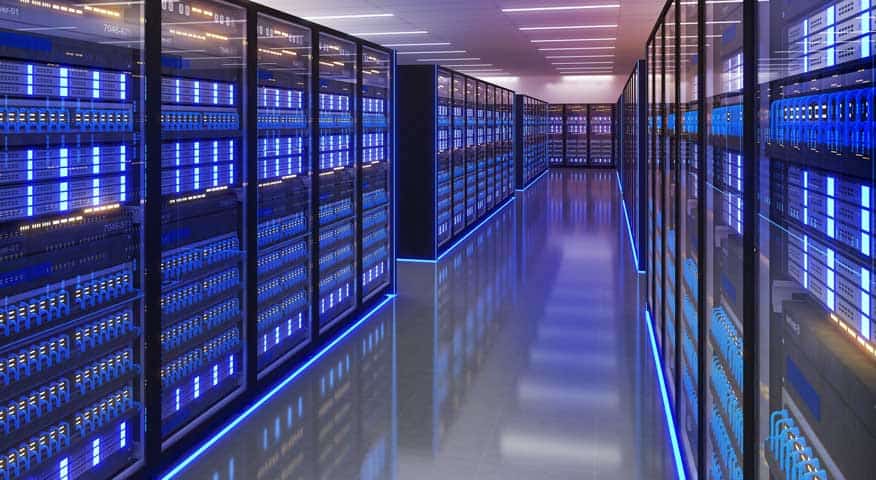Think about how often you interact with a digital service every day, whether that’s asking Siri for directions to an appointment, taking pictures with your phone, or sitting down to stream the latest season of The Great British Baking Show.
We take for granted that these services will be available when we need them. And typically, they are, thanks to data centers — facilities that power our data-centric lives.
WHAT ARE DATA CENTERS?
Data centers are facilities that house networks of servers. These high-tech hubs provide data storage and processing power. They store the websites we visit and the movies we watch, and they contain the information technology infrastructure and operations for all of the digital services we use.
“Every time we’re on a Zoom call, there’s data going between our computer and some big gray building in the middle of a field somewhere,” said Mark Dyson, managing director for RMI, an organization focused on clean energy headquartered in Colorado.
“Every time you pick up your phone or type a key on your computer, there’s probably an interaction with a data center.”
Estimates vary when it comes to the number of data centers operating today. Cloudscene, a platform for procuring network services, lists more than 2,000 data centers across the United States, ranging from localized, small-scale centers to massive facilities.
While you’ll find data centers spread out across the country, they’re especially concentrated in a few areas, including the East Coast and California. Colorado currently has about 55 of them — with most of those in metro Denver, according to another industry database.
Some businesses own and operate their own data centers to provide the processing and storage they need. Others might rent server space from other companies in what’s known as a co-located data center.

Every time you pick up your phone or type a key on your computer, there’s probably an interaction with a data center.” — Mark Dyson, managing director for RMI in Colorado
WHY DO DATA CENTERS CONSUME SO MUCH ELECTRICITY?
Because they’re providing resources to power computing and storage needs for different companies and services, data centers operate around the clock. This means that they require 24/7 power — and lots of it.
“Once some of the biggest data centers that are starting to be built right now are fully up and running, they will consume more electricity than the city of Denver, in just a few buildings on one campus,” Dyson said.
Data centers consume this level of power because of three primary systems. First is the computing hardware itself. The servers and networking equipment require electricity to operate.
The second system is temperature control. Running servers generates substantial heat, and the servers must be cooled so they don’t overheat. Management consulting firm McKinsey estimates that facility cooling accounts for about 40% of the energy a data center consumes.
And finally, power is required for the ancillary systems, such as lighting and security, that are needed to operate any sort of facility.
HOW MUCH ARE DATA CENTERS EXPECTED TO GROW?
Data centers were already prevalent because of the many ways we use data in modern life. But demand for them is rising even faster to support artificial intelligence-based services. AI requires exponentially more computing power than ordinary processing.
As our demand for data-based services continues to grow, the need for more of these facilities will grow with it. In fact, according to the Electric Power Research Institute, data centers represent one of the fastest growing industries in the world. Researchers predict that the number of data centers in operation worldwide will grow to more than 8,300 by 2030.
And as the number of data centers grows, their energy consumption is likely to grow, too. Investment bank Goldman Sachs reported last year that data centers accounted for 1%–2% of the power consumed worldwide. They estimated this share could grow to 3%–4% by 2030.
But Dyson points out that any actual rise in power usage will depend heavily on other factors beyond the number of data centers. For example, improving energy efficiency could help balance out the growing demand.
Data centers essentially form the backbone of everything we do or interact with online. Understanding their role gives us insight into the technology we use on a daily basis. As we expand our own reliance on digital services, and as companies continue to develop AI technology, data centers are poised to become an even bigger part of our lives.
Kim Graber is a freelance writer based in Longmont.










